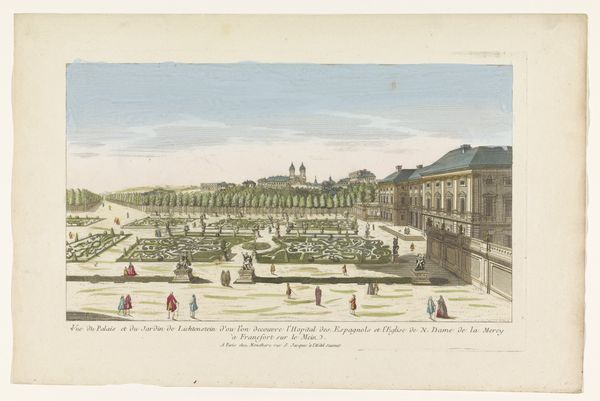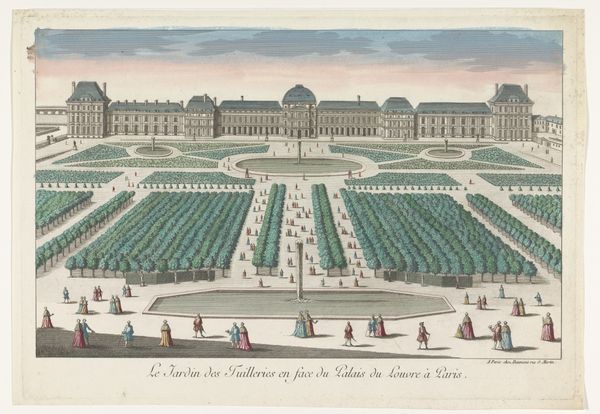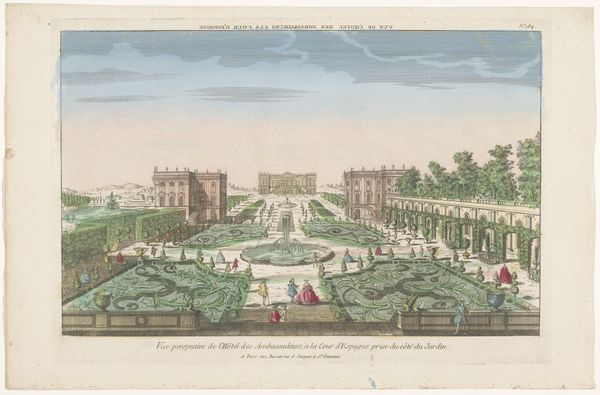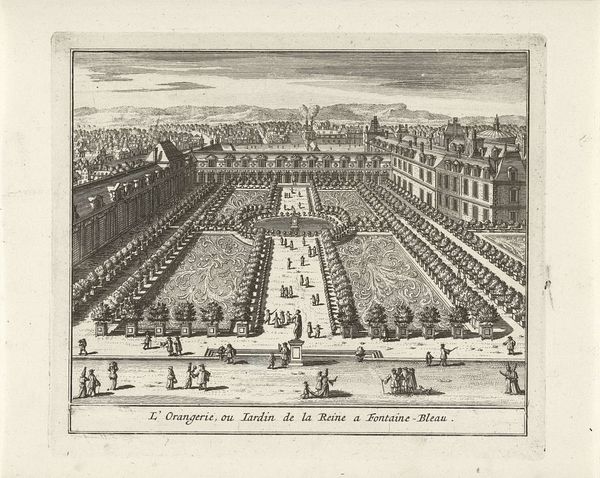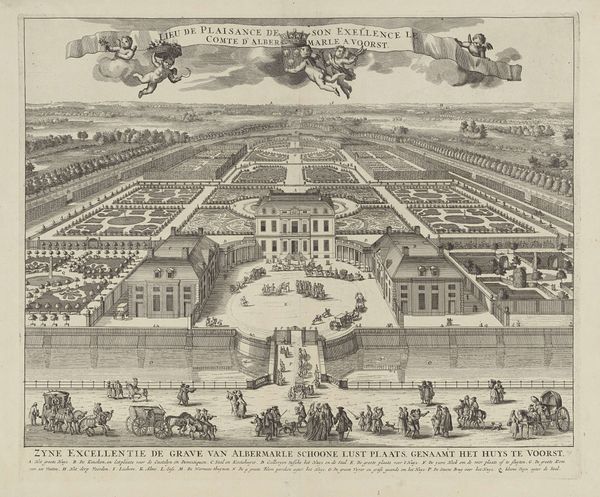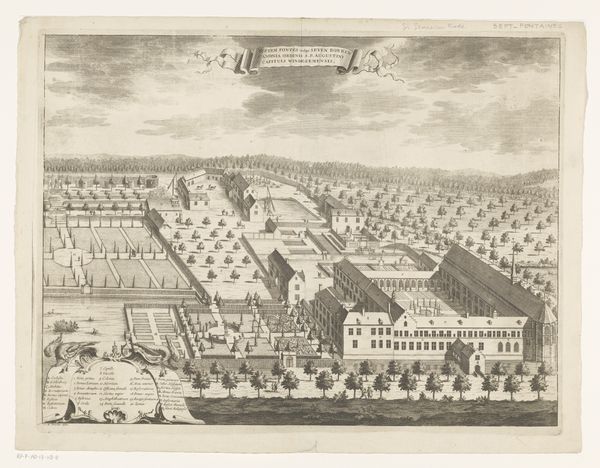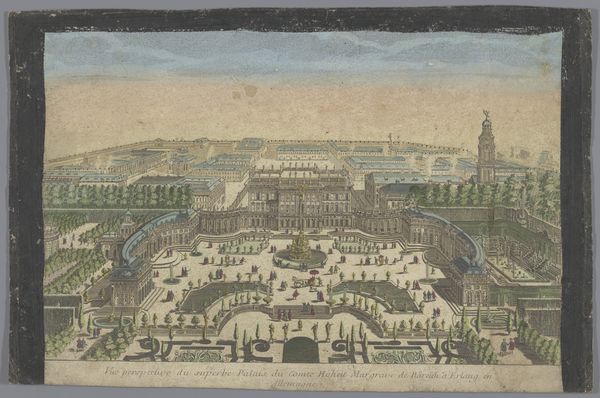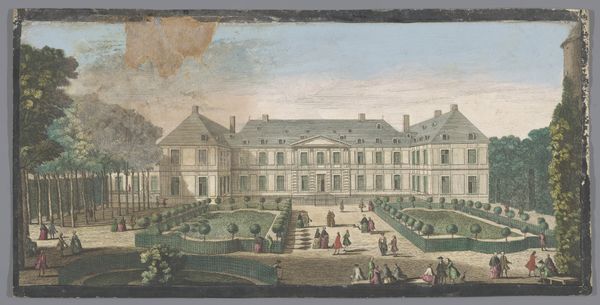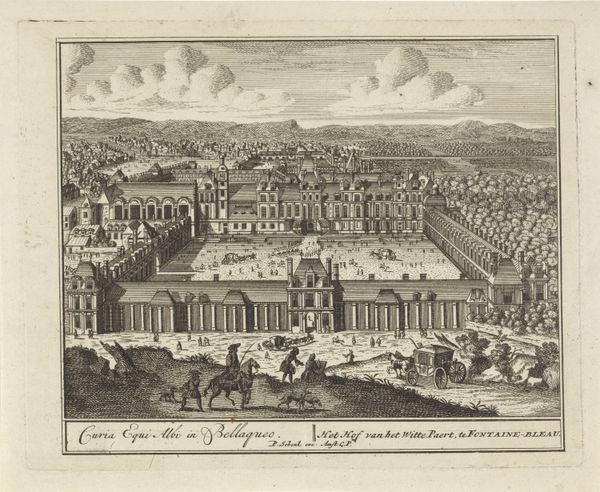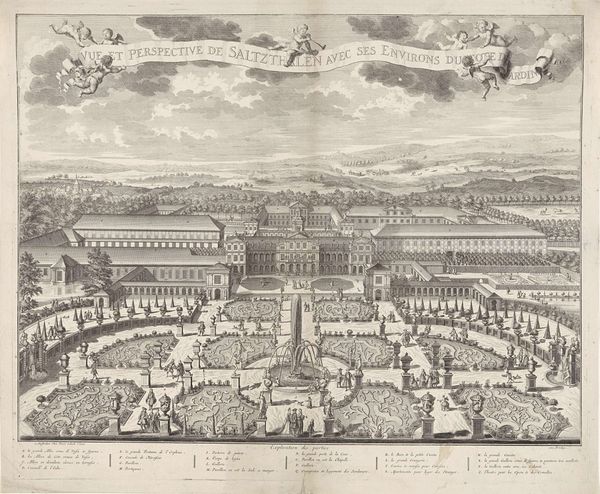
Gezicht op het Palais des Tuileries te Parijs gezien vanaf de Jardin des Tuileries 1742 - 1801
0:00
0:00
Dimensions: height 334 mm, width 445 mm
Copyright: Rijks Museum: Open Domain
Editor: We’re looking at “View of the Tuileries Palace in Paris from the Tuileries Garden,” a print by Georg Balthasar Probst made sometime between 1742 and 1801, held at the Rijksmuseum. The layout of the gardens strikes me as meticulously planned, very ordered. How do you interpret this work? Curator: It’s a fascinating lens through which to examine power and social structures. These formal gardens weren’t just aesthetically pleasing; they were carefully constructed displays of control over nature and, by extension, society. What social groups do you think would have had access to these spaces? Editor: I imagine mostly wealthy people, nobles, maybe some merchants? It doesn't seem like a space designed for everyone. Curator: Precisely. And how does that limited access reflect the broader power dynamics of the time? These gardens, the Palace, everything speaks to the Rococo aesthetic. It’s an era where artistry and privilege intertwine. Editor: So the artwork serves as a record of who held power at that moment in time? Curator: Exactly. By visually representing this controlled environment, the artist subtly reinforces existing social hierarchies. But think, too, about the perspectives *not* included. Who built and maintained this space? Whose labor made it possible? Those stories are often erased from these idyllic depictions. Do you think an artwork like this can inspire a more nuanced conversation about social justice and historical power? Editor: Absolutely, especially if we look at it critically, asking those questions about labor and access. Thanks, I am seeing it in a new light. Curator: My pleasure! It's always about digging beneath the surface and challenging the dominant narrative.
Comments
No comments
Be the first to comment and join the conversation on the ultimate creative platform.

